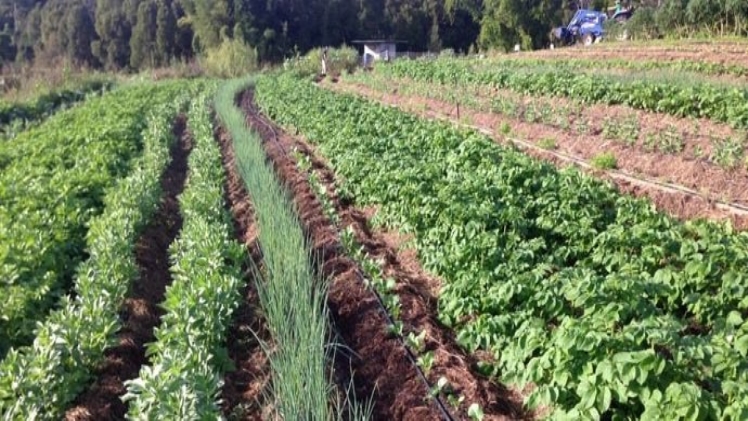
A Planning Manual, by Charles L. Mohler and Sue Ellen Johnson in Resources) 1. Crop rotations a) Crop rotation defined: The movement of crops from site to site on the farm in a planned sequence b) Rationale behind crop rotation: It interrupts pest-host cycles and prevents the buildup of pests, weeds, and pathogens. Rotation also allows crops to access nutrients from different soil depths, based on their rooting characteristics.
Integrating cover crops and fallow periods into rotations helps build soil organic matter and improve aggregation. 2. Rotation and sequencing considerations a) Try to avoid repeated planting of crop species that are subject to similar pests, diseases, and weed pressures in the same beds.
Rotate with different crops to remove hosts and break pest cycles. i. Example: Solanaceae rotation. It is common practice to change the location of Solanaceae family crops each year. Because these crops (tomatoes, eggplants, peppers, potatoes, etc.) share common pests and pathogens, repeated cropping in the same location can lead to the buildup of pest populations. b)
Rotate crops to maximize use of nutrient inputs and distribute nutrient demand placed on the soil i. Examples of multi-year crop rotations (see Mohler and Johnson 2009 and Coleman 1995 in Resources) c) Rotate crops with various types of root systems to improve soil health and structure. E.g., tap-rooted crops promote water infiltration; fibrous-rooted crops help maintain soil organic matter levels. d) Incorporate fallow periods and perennial cover crop rotations. Fallow periods—areas intentionally left uncultivated and planted to perennial cover crops—allow the soil to remain undisturbed and the aggregation processes to proceed uninterrupted.
Last speech
This can help restore the desired physical components of soil health. See more at Supplement 1, Strategies for Improved Weed Management on Small-Scale, Diverse Farms in Unit 1.10. 3. Crop rotations and within-season sequences are farm specific and will depend on the diversity of crops being grown, as well as factors such as farm location, soil types, climate, and economic factors. See examples at Mohler and Johnson 2009 in Resources.